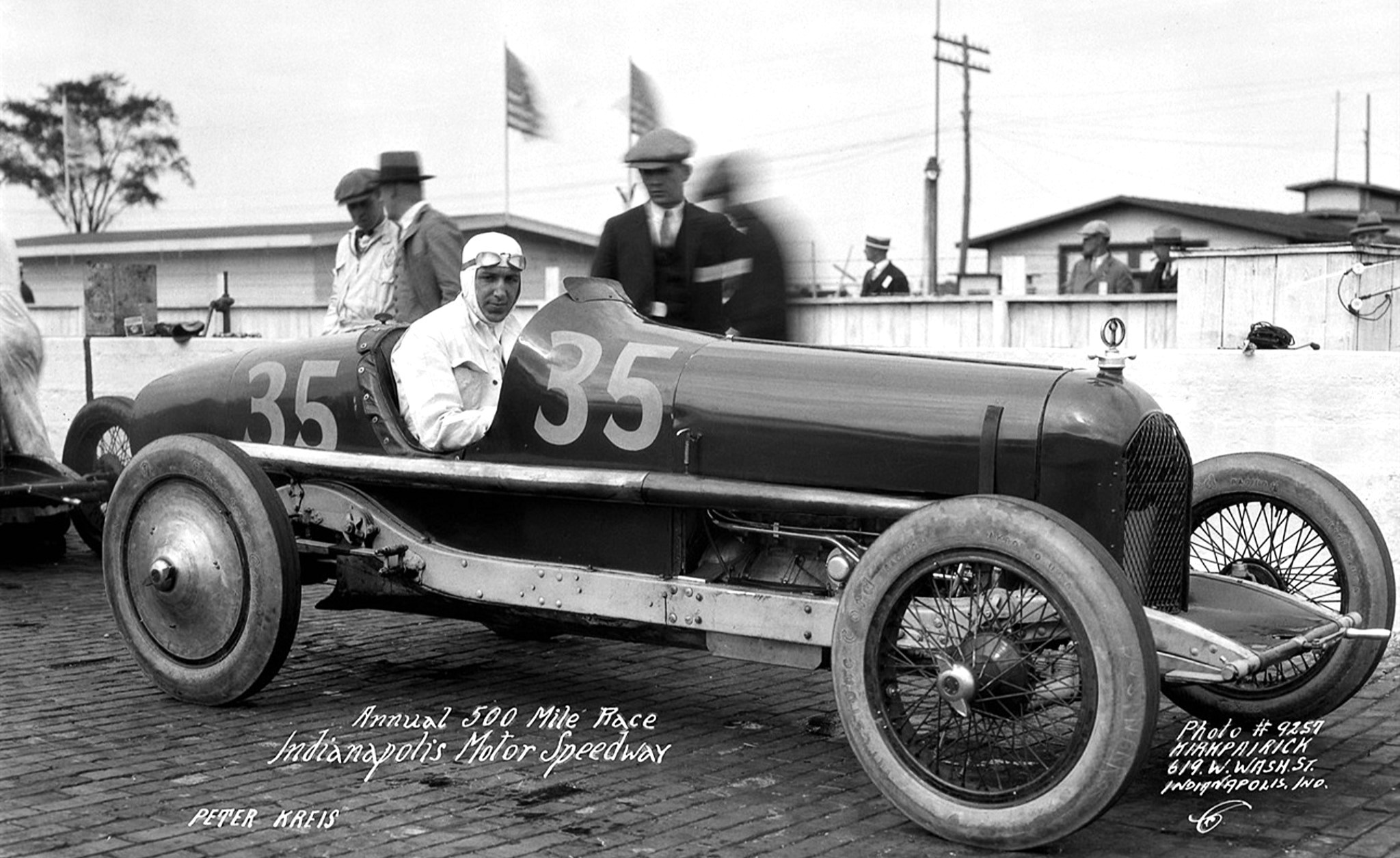When just a young boy of 5 or 6, Bill Walker made a pilgrimage with his mother and aunt to Asbury Cemetery in East Knox County. Though he spent his youth in the Arlington neighborhood of North Knoxville on Raleigh Avenue, his mother’s people came from “the fork.” It was a day for weeding and cleaning up family gravestones.

Pete Kreis’s grave in Asbury Cemetery
While he can’t recall which particular holiday was demanding housekeeping in the graveyard, one thing he saw that day stayed with him for the rest of his 79 years: the gravestone of Knoxville race car driver Pete Kries. Albert Jacob “Peter” Kreis (pronounced “Chris”) was killed in a practice lap at the Indianapolis Motor Speedway on May 25, 1934, when his car left the track on the first turn.
“Like any Southern boy, I was fascinated with cars,” Walker said. “I saw this huge monument, with the Indianapolis Speedway on it, and a car going off the track. It captured my imagination.”
That imagination has turned into a book, The Last Lap: The Mysterious Demise of Pete Kreis at The Indianapolis 500. Published by Octane Press, the book is set for release on May 14, and is the second that Walker has published.
While the author spent his childhood in North Knoxville, attending McCampbell Elementary School and Arlington Baptist Church, by 1957, his family had moved on. They lived briefly in Blount County before moving to North Carolina. From there, Walker decided to attend college at the University of Virginia, receiving his bachelor’s and master’s degrees in English. After teaching for a decade, he went into administrative work, as an associate vice president at Virginia Tech, Gettysburg College and the College of William and Mary.

William “Bill” Walker
Walker retired in 2007, and currently lives with his wife in Stanton, Virginia. Retirement turned him to three stories he’d kept in his pocket, intending to write when life settled down a bit. The first, Betrayal at Little Gibraltar, about a World War I battle, was published by Scribner in 2016. He isn’t letting on what the third one is just yet.
Though he has not lived in Knoxville since he was a child, family ties kept him coming back on a regular basis. Walker said he has never made a visit back without heading to Asbury Cemetery to visit Kreis’s grave. He has researched his story for decades, spending countless hours with Kreis’s sister Hazel when she was still alive. She also allowed him to make copies of all of Pete’s papers and assorted memorabilia.

Peter Kreis
Part of the fascination with Kreis’s demise (that also killed mechanic Robert Hahn) is that the crash just didn’t make any sense to other drivers of his era. Walker pointed to an article in the Knoxville News Sentinel from February 23, 1935, regarding a gathering of drivers in Daytona, Florida:
They ponder and argue … over the kid from Knoxville … whose death … was the strangest in all racing history. Kreis … rode up the side of the track for about 200 yards, going only about 90, and finally went over the wall, with never a wheel mark to show he fought for control, nothing wrong with his car, and he apparently in the best of health and spirits.
Walker said Kreis was “loved by everybody” even if he could be a bit devil-may-care when it came to matters of speed. He was known for taking a month off every year so he could go race at Indy. Though he never won or placed in the race (his best finish was 8th), one year his car won without him. Frank Lockhart signed on as relief driver at the 1926 Indy 500 when Kreis was hospitalized with the flu. Lockhart was killed just two years later trying to set a speed record at Daytona.
“Pete was an exciting person,” Walker said, adding that he also had an airplane. “His life is an exciting story.”
To pre-order the book, go here. Photos courtesy of Bill (William) Walker
[su_image_carousel source=”media: 120537,120540,120536″ limit=”2″ crop=”none” align=”center” max_width=”400px” dots=”no” image_size=”medium”]
Beth Kinnane is the community news editor for KnoxTNToday.com

